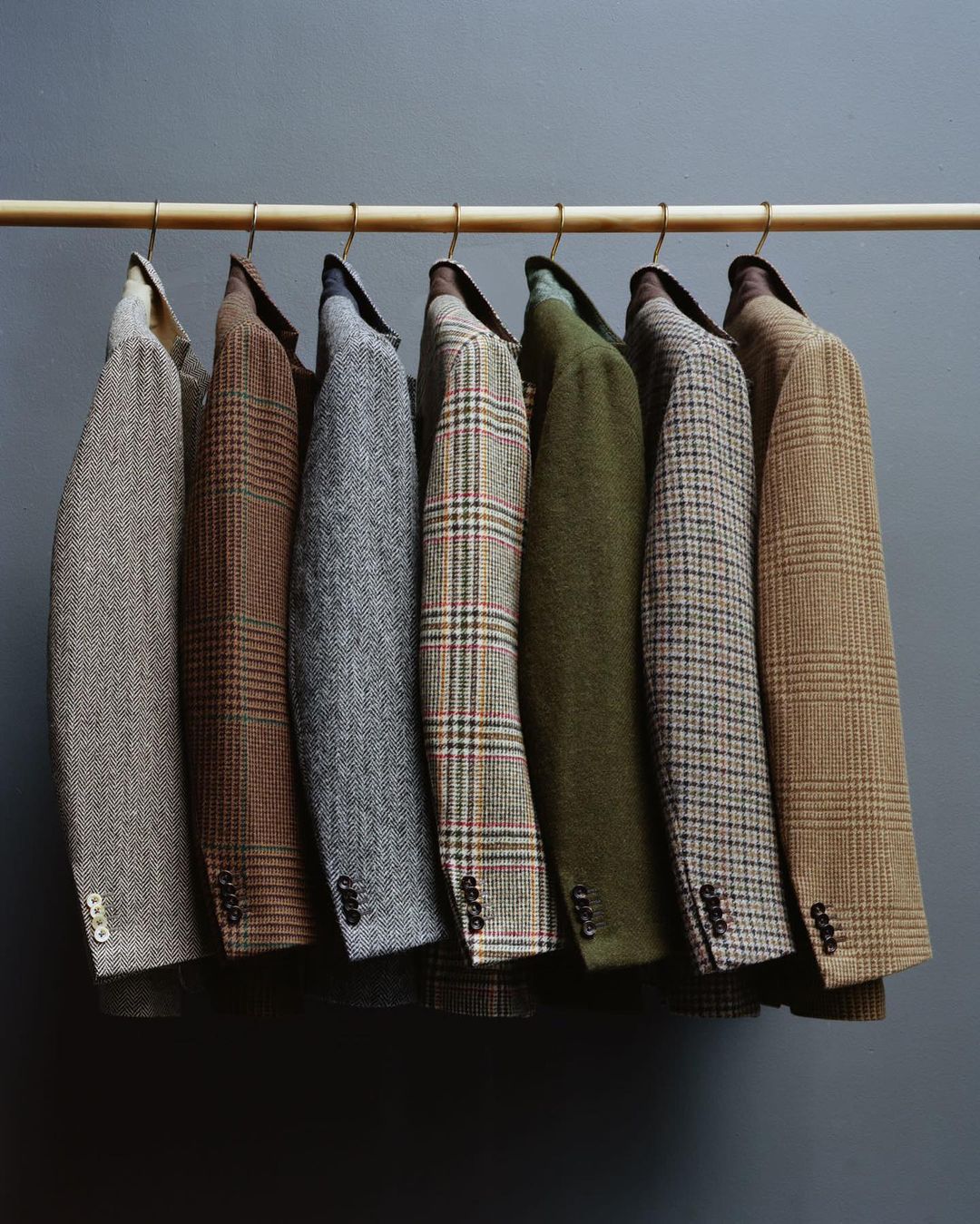
Karl Lagerfeld, the former Chanel creative director who dressed like he was on a heist, was as known for his outrageous quotes as he was for his fashion designs. The designer seemingly loved little, expressing adoration only for his cat, Coupette, Hedi Slimane’s stick-thin clothes, and life-sized chocolate sculptures of men. For everything else, he held nothing but contempt. In a March 2008 interview with Hong Kong’s Prestige Magazine, he said that he hated children (“I hate all children”), people in general, and the process of ordering bespoke clothes because it involves being touched by strangers. He also hated ugly people (“[they are] very depressing”), when people talk to him about their illness (“I’m not a doctor!”), intellectual conversations (“I only care about my opinion”), the smell of cooking (“I hate the smell of cooking”), and selfies (“what I hate most in life is selfies”).
Unsurprisingly, Lagerfeld was also not a fan of holidays. “You need to work with your brain,” he said, according to UK magazine Grazia. “I don’t think stops are healthy. Holidays were invented for people who go to the same place every day and do the same thing. They need a break. I don’t need that. I have a lot of variety in my life.”
Of course, like most people, I need a holiday, and I adore the one at the end of the year the most. Winter holidays bring good food, sweet snacks, time with family and old friends, reasons to travel, and most importantly, excuses to dress up. If you have something in your wardrobe that you love, but haven’t had many opportunities to wear, the holiday season is a great time to break it out for various social engagements (not least of which includes New Year’s Eve parties, which Lagerfeld also detested). Likewise, there are plenty of stay-at-home clothes that are incredibly satisfying to wear this time of year. Here are some ideas on how to dress for the holidays, even if you hate everything like Lagerfeld.
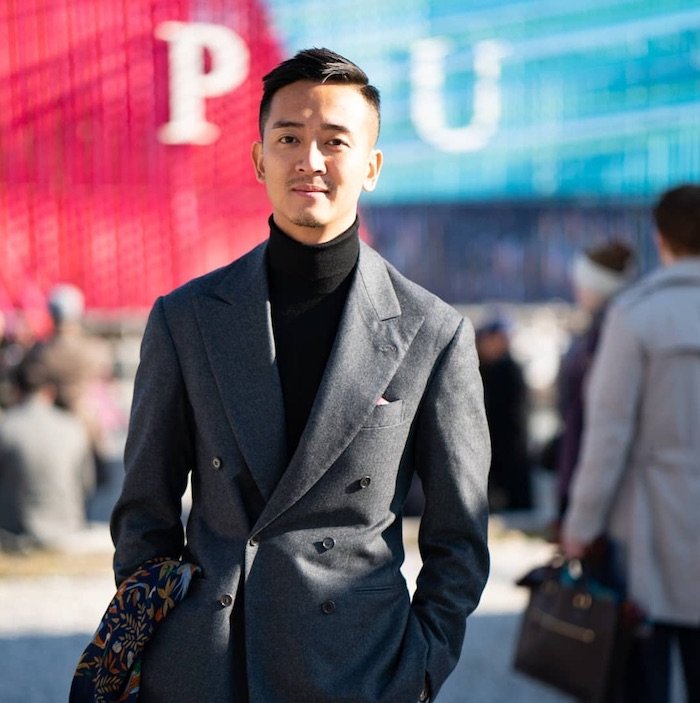
The Happy Suit
For decades, the fashion industry has told people how to dress down their tailored clothing to look more natural in business casual environments. Like other fashion writers, I’ve dutifully repeated the same lines: wear sport coats instead of suits, aim for a soft shoulder line, and think about casualizing details such as patched pockets and open dress collars. But after more than a year of lockdown, I’ve yearned to dress up again. When the country reopened last summer, I returned not to sport coats but suits.
In the past, I’ve called these fun suits, happy suits, and going-out suits. These are simply suits that you wear to feel good. Unfortunately, as offices have become more casual, most men have few opportunities to wear one. Yet, nothing flatters the body better or looks as elegant. If you enjoy wearing a suit, consider breaking one out of the holiday. The suit today can be a festive, celebratory garment, not just something you wear to look serious for Powerpoint presentations. Depending on what you have in your wardrobe, you can wear a suit to holiday parties, upscale restaurants and bars, outings to the city, and anything that can be described as a soiree. Of course, it helps to be in the company of others who are similarly dressed up, but most people only need a bit of gentle coaxing this time of year.
When choosing a suit, consider the time, place, and location (or, as George Costanza would say, dress according to mood). A dark brown corduroy suit would look great in the afternoon with suede chukkas and an oxford cloth button-down, but it might be too casual for some environments in the evening. If you’re headed to the city to get dinner, consider something like a grey or navy mohair-wool suit, which will have a subtle sheen that looks tremendous under artificial light (think: dimly lit restaurants and bars). Dark, monochromatic outfits also look very sophisticated in the evening, so long as you’re in the right setting. In the photo above, Alan See of The Armoury is wearing a dark grey flannel double-breasted suit with a black turtleneck (a pair of black oxfords or tassel loafers here would look smashing). This outfit would be great for an evening holiday party.
Photo via Elliot Hammer

Tweed Sport Coats and Denim Shirts
If a suit is too formal, the next step down is a sport coat. Lately, I’ve been really into wearing them with snap-button denim Western shirts. A denim shirt is your perfect travel companion if you’re traveling for the holidays. Traveling means accepting that your clothes won’t always arrive in perfect condition, or that you’ll have the time and tools necessary to iron every day. Since denim is heavier than most dress shirt materials, it rumples more than it wrinkles, making it a good substitute for a non-iron shirt without the use of chemicals. Plus, a rumpled shirt has a rugged Robert Redford charm, whereas wrinkled dress shirts in poplin or even oxford look unkempt.
Denim shirts look especially good with tweed jackets. Ralph Lauren is known for wearing this combination, and his team often relies on it for runway presentations, lookbooks, and in-store displays. It somehow looks like a very American thing to wear without being too trad or Ivy. A denim shirt is your rustic Americana foil for your city-mouse attire, and it tames the formality inherent in tailored clothing. For trousers, try rustic materials such as tan cavalry twill or brown whipcord. Tan chinos also work in a pinch.
My denim shirts are from Wrangler and Kapital. You can also find good ones from Bryceland’s, Barbanera, Taylor Stitch, RRL, Joe McCoys, J. Crew, and Todd Snyder. Our sponsor Proper Cloth offers one of the more unique denim shirt offerings. Since they’re an online custom shirtmaker, they can make a shirt according to your measurements and specifications. However, once in a while (like now), they also offer uniquely washed indigo shirts, including denim. These shirts are put through a special enzyme wash, which breaks down the fabric and makes the seams more puckered. This gives the material a more lived-in feel, but it’s typically a look that’s only achievable through ready-to-wear. Most custom shirtmakers can’t do this for you because washing an individual shirt this way is too costly and time-consuming. Proper Cloth gets around this by organizing bulk runs. The result is a very casual, charming shirt that’s typically only available through ready-to-wear, but with the precise fit of custom tailoring. Ian at From Squalor to Baller has a review.
Photo via Giuseppe Santamaria
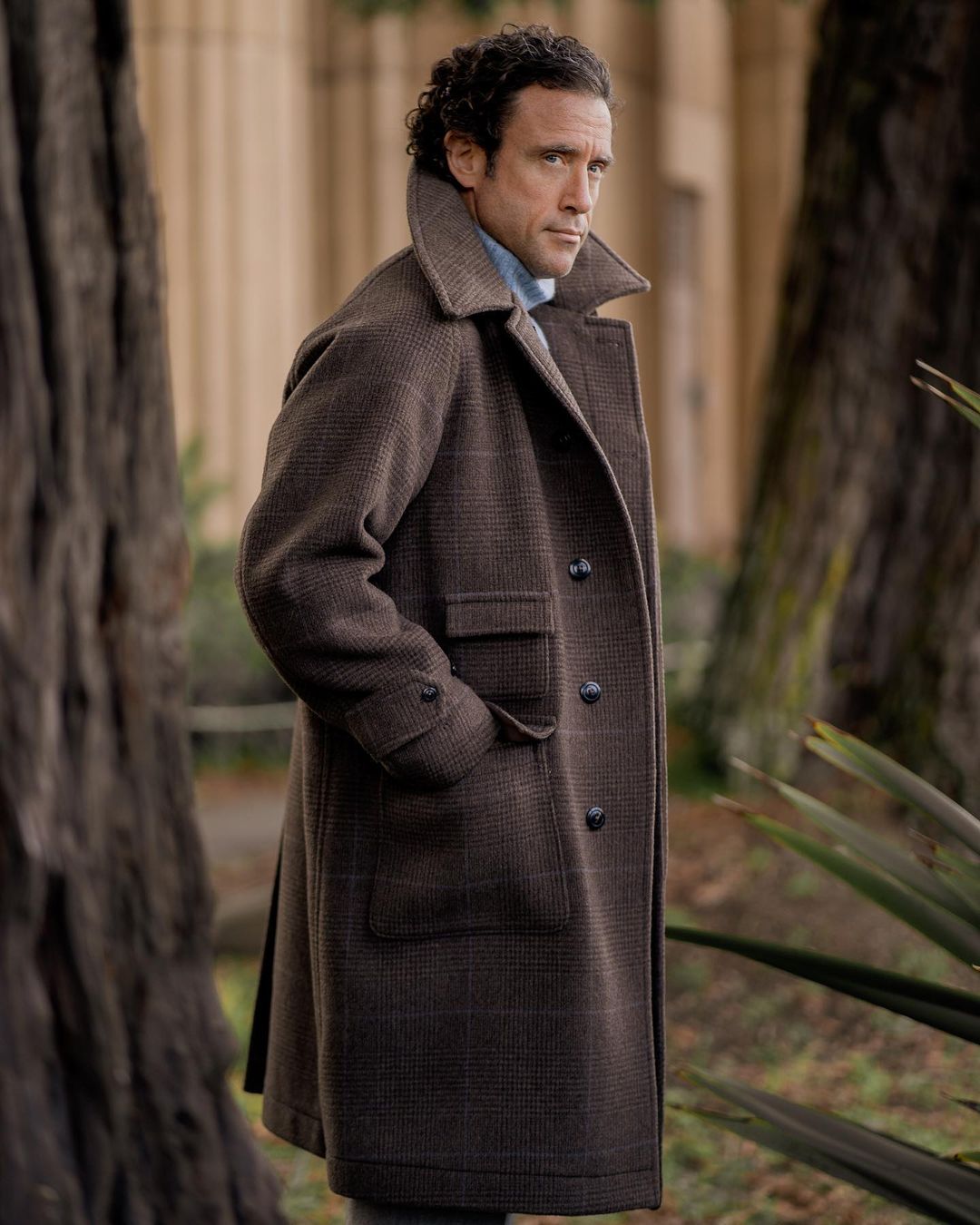
Overcoats with Chunky Sweaters
If suits and sport coats are too formal, you can always reach for an overcoat. The overcoat is possibly the best winter garment. Not only are they practical this time of year, as they shield you from wind, cold, and perhaps rain, they cover up so much of your body, they almost define the outfit. You can wear an overcoat with nearly anything and know you look put together. Tailored trousers and a sport coat? Perfect. Jeans and a sweatshirt? Still great. You can’t wear an overcoat indoors for an extended period, but it’s a great way to get some of the flattering, face-framing effects of tailored clothing without looking too dressed up.
There are three things to think about when choosing and wearing an overcoat. First, aim for ones that are a bit longer and roomier than what was commonly sold ten years ago. Short, slim overcoats simply don’t have the same drama or verve. Aim for something with enough room to layer, and ends around your knees or just above it. You want something that swishes when you walk.
Second, if you’re wearing a roomy overcoat, you’ll want something heavy enough to layer underneath. A chunky sweater is often the perfect solution because it not only keeps you warm, it’ll also match the visual weight of the coat. Thirdly, and lastly, consider how the sleeves and shoulders are constructed. A set-in sleeve will give you a relatively more squared-off, T-shaped silhouette, which helps broaden the shoulder line. By contrast, a raglan sleeve, which will have a shoulder seam that goes from your armpit to your neck, will give you a more relaxed, rounded silhouette. Neither is better or worse; it’s just personal preference. But it’s worth paying attention to how these different styles look on you. For more about overcoats, see our buying guide.
Photo via Peter Zottolo
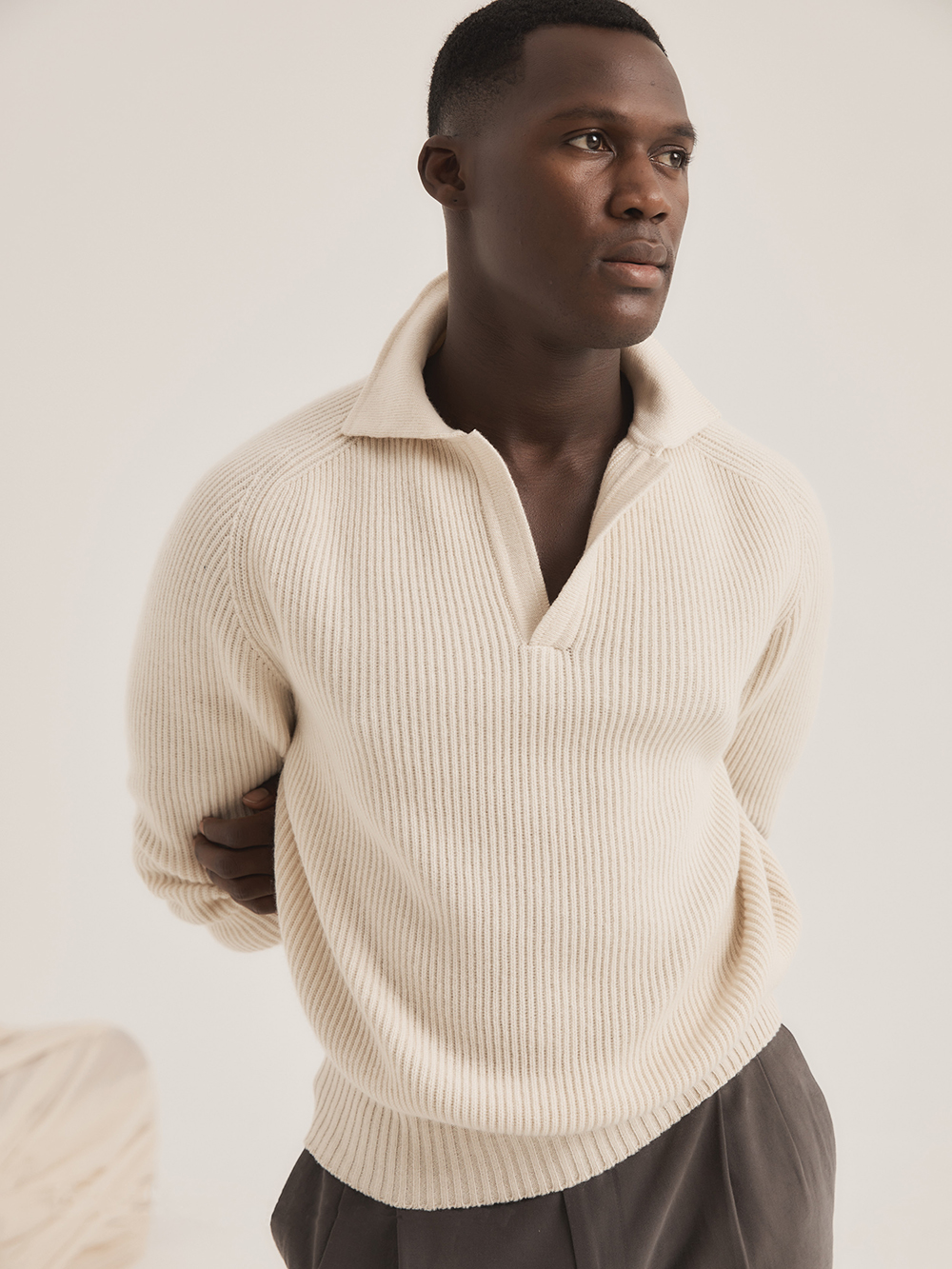
Wool Trousers and Textured Sweater
The most common and practical holiday outfit usually involves a pair of jeans, sometimes chinos, teamed with a plain merino v-neck or crewneck sweater, occasionally layered over a dress shirt. This is the outfit you break out for mom or to have dinner with the family. To be sure, it’s a perfectly fine and sensible outfit, but it lacks something in terms of style. It’s a little too business casual.
Instead, try swapping the jeans out for wool trousers or five-pocket cords, and then changing out the plain merino sweater for something textured or patterned. This is still the simple, unassuming outfit you can wear when you don’t want to look overdressed. But by switching out jeans for trousers, and a boring, smooth sweater for something a little more interesting, you move things away from business casual and towards something stylish. Some sweater ideas:
Cable Knit: Admittedly pretty vanilla, but still steps ahead of The Most Ubiquitous Sweater on Earth (the plain merino). You can find cable knits at every mall, including retailers such as J. Crew, Brooks Brothers, and Ralph Lauren (avoid chest logos, if you can). For an upgrade, William Lockie makes some of the best cashmere cable knits in the world, and they will last you a lifetime if you take care of them.
Shetlands: My favorite type of sweater. These are durable, relatively affordable, handsomely textured, charming in history, and can be worn with nearly any kind of wardrobe (classic, workwear, contemporary, etc.). You can find them for as little as $25 in thrift stores and eBay. For something new, check Boise, Trunk Clothiers, Howlin, Junior’s, The Carrier Company, Anglo Italian, Drake’s, and my favorite, O’Connell’s. Additionally, J. Press makes a famous brushed version known as a Shaggy Dog, which is softer and even more textured. Brooks Brothers has a more affordable version, although it’s not as fluffy.
Fair Isles, Norwegian, and Icelandic Sweaters: Although these designs are rooted in regional traditions, I mostly associate them with the holidays. They’re a staple of every festive holiday commercial, and the sort of thing you’ve seen layered underneath parkas, Barbours, and topcoats. For the real deal, check Jaimeson’s, Junior’s, The Carrier Company, LL Bean, William Lockie, Drake’s, Monitaly, and O’Connell’s. J. Crew also sells slightly more modernized versions.
Fisherman Sweaters: A chunkier sweater that adds visual weight and warmth. There are lots of regional traditions, such as the guernsey, although most people will probably want something like what Chris Evans wore in Knives Out. Check Inis Meain, Colhay’s, O’Connell’s, Trunk Clothiers, Junior’s, Inverallan, and The Aran Sweater Market.
Shaker: An American sweater style that grew out of a Christian sect known by the same name. These sweaters have a beautiful social history associated with the group’s beliefs in pacifism and equality. American Trench is selling some right now.
Classic Adjacent: These sweaters sit just outside of the canon of classic men’s style. They complement a wardrobe full of suits and sport coats, but may not necessarily fall into one of the categories above. They feel dressy, refined, and elegant, but have a directional element that makes them more interesting. Check De Bonne Facture, Colhay’s, Heimat, Cavour, Berg & Berg, Yeossal, GRP, Frank Leder, Stephan Schneider, and Rubato. Stoffa is also great for this sort of thing. The company skillfully rides the line between classic and directional, offering customers things that sit comfortably with tailored clothing without bordering on business casual. They made the ribbed polo you see above.
Photo via Stoffa
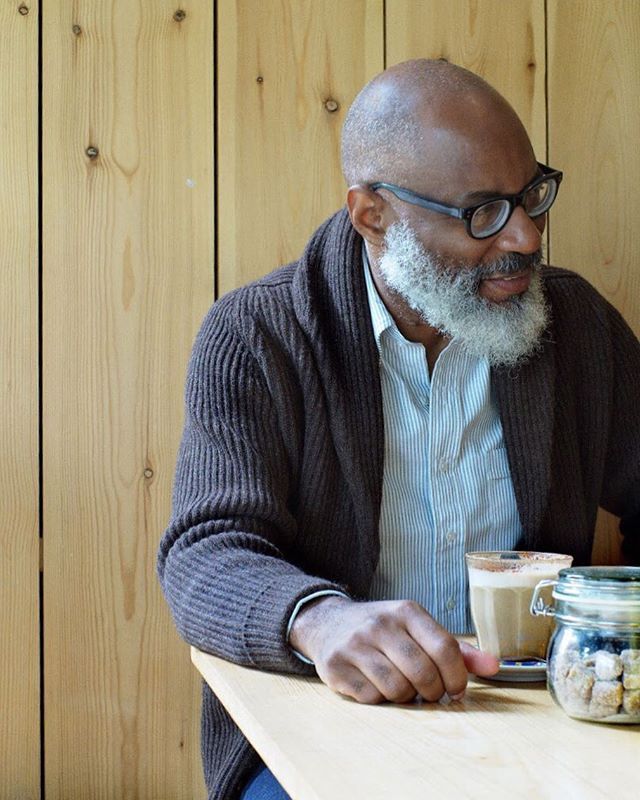
Chunky Shawl Collar Cardigans
The chunky shawl collar cardigan is possibly the most sumptuous, indulgent thing you can wear in the wintertime. In old Brooks Brothers catalogs, the Madison Avenue clothier suggested that you could wear one in place of a jacket. “Handsome shawl collar cardigan of ribbed 3-ply Shetland wool with leather buttons,” read one catalog from winter 1979. “Can easily serve in lieu of a sport jacket. Natural or gray.”
I mostly think of them as something you wear at home, possibly around the neighborhood, but not really for long durations outside. They work well in lieu of a sport coat in the sense that you can wear one at home when hosting holiday parties. With a large collar that drapes like a scarf, they help frame the face better than a crewneck sweater. You can wear one with almost anything: a pair of wool trousers and an oxford cloth button-down, some beat-up jeans and a t-shirt, or chinos with a thin merino turtleneck (get that knit on knit action).
It’s almost impossible to go wrong when purchasing one, so long as it’s made to a reasonable standard. The best shawl collar cardigans tend to be made in Scotland, typically from lambswool or cashmere. Lambswool is a little itchier but more affordable. If you can splurge on cashmere, it’s a tremendous luxury and feels great when layered over t-shirts. I favor the more sober colors, such as navy, brown, and gray. But unusual colors such as pine green, burnt orange, and even black can be wonderful. Check brands such as Colhay’s, Scott & Charters (stock coming soon), The Armoury, Drake’s, Cordings, Bullock & Jones, O’Connell’s, Winston & Company, Spier & Mackay, Kent Wang, and Northern Watters.
Photo via Drake’s
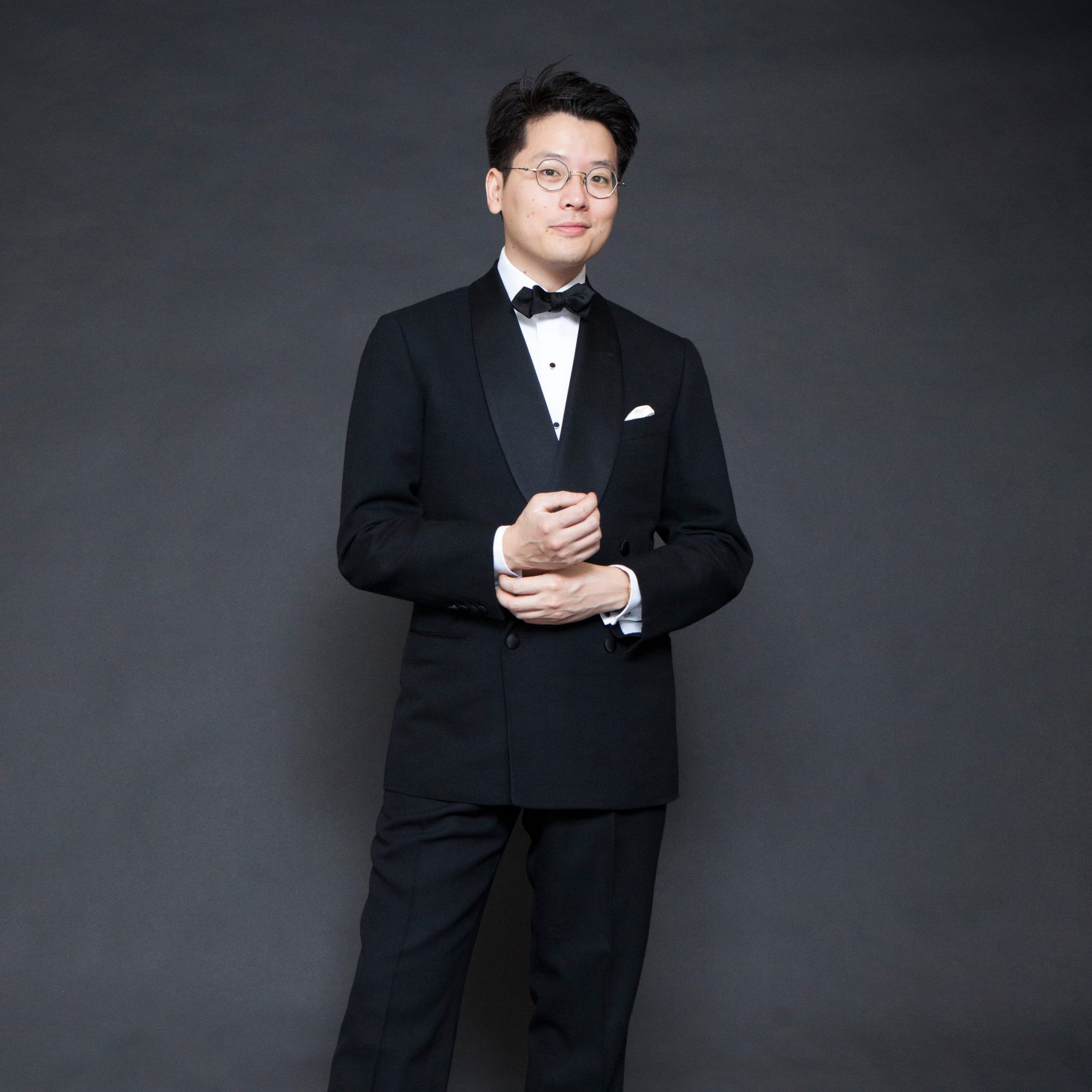
Black Tie
New Year’s Eve is the one time per year when almost anyone can wear black tie. You don’t have to attend a fancy ball or opera — although those would be great excuses to dress up. Black tie can be worn to NYE parties, upscale restaurants, and fancy bars right before the clock clicks over. Remember that black tie is an inherently celebratory garment — it’s a party rig — and NYE is for celebrations.
Black tie can sometimes seem like a complex web of arcane rules, but you can put together a great outfit if you follow some simple ideas. First, a black tie rig can be single- or double-breasted, but the jacket should have peak or shawl lapels. Notch lapels don’t have the elegance or formality this rig should communicate. Second, you can wear a single-breasted coat open, but if you do, you should cover your trouser’s waistband with a cummerbund or dress vest. If either of those things feels arcane to you, the simple solution is to never unfasten your jacket.
The traditional tuxedo shirt is a Marcella shirt made with a bib or pleated front. Instead of buttons, this is closed using studs, which you can secure on Amazon for as little as $30. Mark Cho of The Armoury, pictured above, tells us that he sometimes wears fly front, plain tuxedo shirt to keep his formalwear looking more modern. Doing so also does away with dress studs (although he still likes French cuffs to help mark the occasion). For shoes, go with a pair of patent leather opera pumps or black, plain toe oxfords that have been freshly shined. Your neckwear should be a black bow tie made from the same material as your jacket’s facings, and you should wear a neatly folded white pocket square. If you wear a watch, keep it simple — a small, time-only watch on a black leather strap to match your shoes.
If you’re hesitant about black tie and don’t want to get something you may only wear once a year, consider getting a suit that you can wear to dinner and parties, but falls just short of the formal tuxedo. One idea is a navy mohair suit made in a slightly more formal configuration — single-breasted, peak lapels, dual vents, one-button closure, and jetted pockets. When paired with a white shirt (possibly French cuffs), black bow tie, white linen pocket square, and black polished oxfords, this can be something you wear to fancy parties and dinners but doesn’t look as conspicuous as a full tuxedo rig.
Photo via The Armoury







